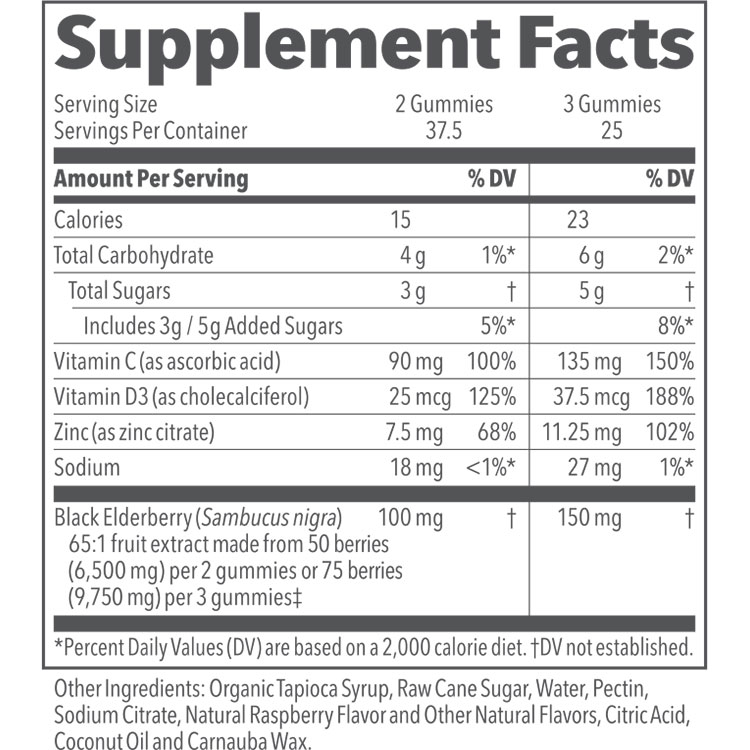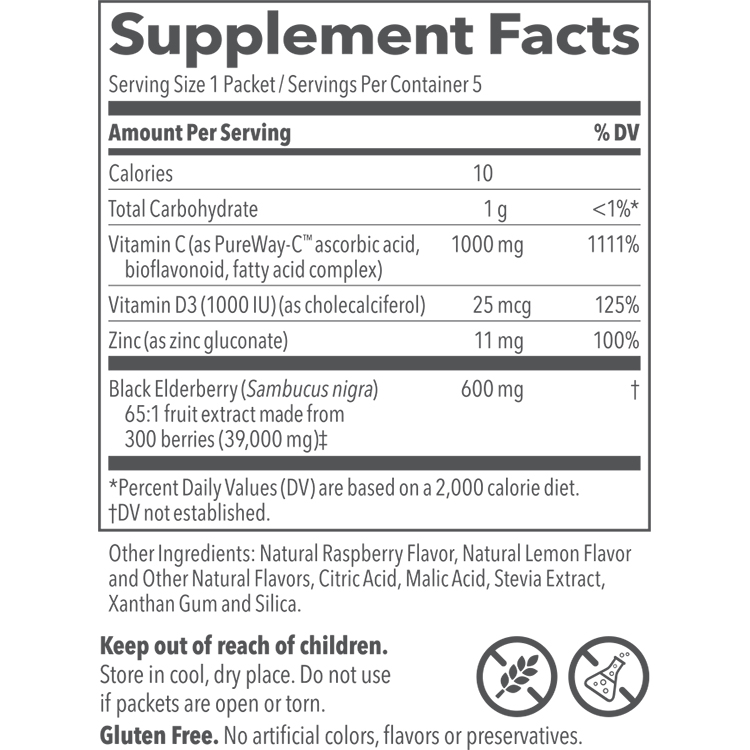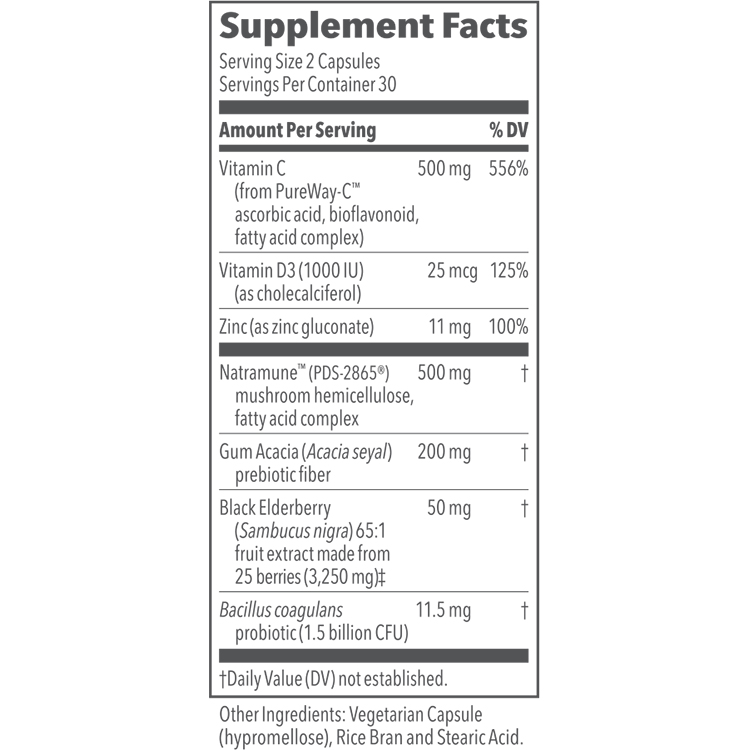BACKGROUND
Ingredient Type: Vitamin
Also Known As: Folinic Acid, Calcium folinate, Leucovorin

5-formyl tetrahydrofolate, aka Folinic Acid, is the natural, active coenzyme form of folate. This is NOT to be confused with Folic Acid, a synthetic, oxidized form often found in certain supplements or fortified pastas and breads. Folinic acid on the other hand is naturally found in foods such as certain fruits, dairy, leafy green vegetables, egg yolks and liver.
Folinic acid was initially discovered by Sauberlich and Baumann as a specific growth factor for the bacterium, Leuconostoc citrovorum, in 1948. Although the structure was initially unknown, the “Citrovorum Factor” was a folate derivative that needed to be metabolized in the liver before it could be utilized in supporting L. citrovorum. Simultaneously as sodium formate was added, increased volumes of the citrovorum factor were prepared with its structure later deduced as levo-folinic acid, aka. 5-formyl tetrahydrofolic acid.
As a B vitamin, Folinic Acid is considered a water-soluble vitamin; meaning it readily dissolves in water. Water-soluble vitamins dissolve quickly in the body and are not normally stored for long periods of time. For this reason, it is important to consume appropriate amounts to prevent folate deficiencies (later explained below). When consumed in excess amounts, these vitamins are then excreted. Other water-soluble vitamins include vitamin A in its Beta-Carotene form, vitamin C, thiamin (B1), riboflavin (B2), niacin (B3), pantothenic acid (B5), biotin (B7), folate (B9) and cobalamin (B12). Folinic Acid enters the body in an already metabolically active form, allowing the nutrient to enter the cells for use without further modification. Both 5-methyl tetrahydrofolate (5-MTHF) and 5-formyl tetrahydrofolate (5-FTHF) are considered the metabolically active forms of folate. 5-MTHF and 5-FTH can be interconverted if necessary, via a series of enzymatic reactions.
TRADITIONAL USES
Folate is known to mainly function either in methylation reactions or in the biosynthesis of DNA and RNA via nucleotide synthesis. Some of the other known benefits of folate are noted (2):
- The formation of purines and pyrimidines which are necessary in specialized pathways for the synthesis of DNA/RNA
- A necessary vitamin during fetal development in preventing such birth defects as spina bifida
- An essential component in the formation of heme, the iron-containing protein in hemoglobin; In the formation/maturation of erythrocytes and leukocytes
- Essential in the formation of various, essential amino acids such as tyrosine, methionine and glutamine
- Vital for the synthesis of choline which is necessary for structural integrity and cellular membrane signaling roles, cholinergic neurotransmission and as a source for methyl groups necessary in other vital metabolic reactions
Folate deficiency is the main reason for concern when considering uses for supplementation. This can occur when the need for folate is greater than the body’s expenditure of the vitamin. Whether due to decreased dietary intake or disruptions in the body’s ability to absorb or excrete folate, deficiencies can lead to health problems down the road if not addressed appropriately. Inability to obtain or retain the right amounts of folate can potentially lead to cardiac/cerebrovascular/neurological diseases, carcinogenesis, malabsorption of other vitamins and minerals, enzyme defects, hepatic disfunction, anemia or neural tube birth defects (4).
WHAT DOES SCIENCE TELL US?
Folate Probably Aids in the Reduction of Congenital Disorders or Defects:
With folate being an integral component in various metabolic and biosynthetic pathways, it can be understood why this vitamin is so vital to fetal development. The effects of deficiency are serious enough that the CDC recommends all women of reproductive age to consume 400 mcg of folate daily (5). Consuming appropriate amounts of folate help reduce the incidence of such major congenital defects like neural tube defects (spina bifida, anencephaly), cleft lip and palate, urogenital abnormalities and cardiovascular malformations (6).
One study examined one hundred and seventy-four women who had given birth to a child with neural-tube defects. Retrospectively, given the initial congenital outcome, their lifestyle and diets were assessed and recorded. Prospectively, these same women were studied during 186 pregnancies. 103 women with 109 pregnancies were provided dietary counseling prior to their pregnancy while the remaining 71 women with 77 pregnancies were not provided dietary counseling. Of all the pregnancies, 8 of the pregnancies occurred in the 45 women who consumed nutritionally poor diets while there were no congenital abnormalities observed from the remaining women who consumed nutritionally adequate diets. It was concluded that women receiving nutritionally poor diets have a significantly higher incidence of giving birth to a child with congenital defects as opposed to women who consume nutritionally adequate diets(7).
Another study assessed the preventative effects of periconceptional multivitamin supplementation on the prevalence of congenital abnormalities. This was a randomized, double-blind controlled trial that consisted of 2,471 informative offspring in the multivitamin group while there were 2,391 informative offspring in the trace element supplement group. In this study, a single tablet of either 0.8mg of folic acid or a trace element supplement was given daily for a month prior to conception and at least until the 2nd date of the second missed a menstrual period. The resulting congenital abnormalities were noted as 20.6/1000 subjects in the multivitamin group and 40.6/1000 subjects in the trace element supplement group. It was concluded from the results that multivitamin supplementation appeared to significantly reduce the rate of urinary tract abnormalities and sporadic cardiovascular malformations (8).
A third study investigated the implementation of a Canadian government policy to fortify flour and pasta products with folate and whether the supplementation was supportive in the reduction of severe congenital heart defects. In 1998 the Canadian government implemented this fortification mandate. The data analyzed infants born between 1990 – 2005, assessing for any severe congenital defect that included: tetralogy of Fallot, endocardial cushion defects, univentricular hearts, truncus arteriosus or transposition complexes. Comparing the periods before and after folate fortification, among the 1,324,440 births, there were 2083 infants born with severe congenital heart defects. Time trend analysis showed no significance in the change of congenital defects prior to fortification while post-fortification showed a nearly 6% decrease in congenital defect prevalence. It was concluded from this analysis that an increase in folic acid intake has a preventative effect on severe congenital heart defects (9).
Folate Possibly Helps Support a Positive Mood and Cognition:
Elevated levels of blood homocysteine is considered a risk factor for cognitive deficit, dementia and even Alzheimer’s. As previously mentioned, folate is a key component in metabolic processes, most notably methylation reactions. When the body is unable to convert folic acid into its metabolically useful forms (5-methyl tetrahydrofolate (5-MTHF) and 5-formyl tetrahydrofolate (5-FTHF), excess folic acid builds up causing various side effects such as nausea, loss of appetite, confusion, and irritability. If prolonged levels of folic acid are present in the blood and not enough of the metabolically active forms are available, existing conditions can be exacerbated along with disease promotion such as reduced immune responses and increased cancer risks (4).
One study investigated the associations between the risks of cognitive impairment and serum levels of folate, vitamin B12, and homocysteine (Hcy). The individuals in the test group were between the ages of 60 – 79 years old. Cognitive impairment and normal subjects were assessed, 100 of each group matched by age, sex and education levels. Cognitive function was evaluated using a Korean version of the Mini-Mental State Examination for Dementia Screening (MMSE-DS). According to the study, in comparison to the normal group, the cognitive impaired group had higher proportions of folate deficiency and hyperhomocysteinemia. The resulting findings suggest a significant association between elevated homocysteine levels and a higher incidence of cognitive impairment(10).
Currently, a couple of recent studies are assessing the potential relationships between periconceptional folic acid supplementation and a reduced risk of Autism spectrum disorder (ASD), or at least the mitigation of increased risk of ASD from prenatal exposure to certain drugs or toxic chemicals. Emerging evidence is pointing to a link between the risk of ASD with the maternal folate status early on in pregnancy. With an understanding that certain toxic exposures during pregnancy have been associated with specific disease risk, it is unclear exactly as to the etiological mechanism behind the disease(s). What is well understood is that adequate levels of folic acid supplementation are necessary for neurodevelopment along with aiding the body to properly metabolize and detoxify appropriately via specific methylation pathways. Further studies still, however, need to be conducted in order to verify the hypothesis that links deficient maternal folate status to ASD and whether it is a direct link or indirect link due to the presence of persistent toxic chemicals or drugs is currently unclear (11,12).
Folate Possibly Helps Supports Cardiovascular Health:
Observationally, elevated homocysteine levels is positively associated with various cardiovascular diseases, especially ischemic strokes. Lower homocysteine levels are positively associated with lower levels of inflammation which can be one of the predictors to an individual’s cardiovascular health and risk of disease (14).
A study randomized controlled study was performed to assess the utility behind homocysteine-lowering therapy and if there is any correlation with stroke risk reduction. This study tested whether high doses of folic acid, pyridoxine (Vitamin B6) and cobalamin (Vitamin B12) combined would aid in lowering homocysteine levels enough to prevent recurring ischemic strokes in post stoke victims vs. those taking lower dowses of these vitamins. 3680 patients with non-disabling cerebral infarctions were followed. The measured outcomes assessed for recurrent cerebral infarction, coronary heard disease-related events and/or death. Although moderate reduction of total homocysteine after non-disabling cerebral infarction had no effect on vascular outcomes during the 2-year follow-up there was a consistent, direct correlation with total homocysteine levels and vascular risk (13). A recent meta-analysis and an update of the Cochrane review both supported the effects of homocysteine-lowering interventions such as folic acid supplementation alone or in combination with vitamin B6 and vitamin B12 in the reduction the risk for stroke (14,15).
This recently conducted a randomized, double-blind, placebo-controlled study aimed to determine whether there was a correlation between plasma homocysteine reduction via long-term supplementation with folic acid, vitamin B6 and vitamin B12 and inflammatory plasma biomarkers and endothelial dysfunction. 300 female participants were divided into an active treatment group (150 subjects) and a placebo group (150 subjects). Plasma concentrations of 3 inflammatory biomarkers (C-reactive protein, interleukin-6, fibrinogen) were measured at baseline and following the conclusion of the trial. Following the conclusion of the study, although there were no significant effects on the biomarkers of vascular inflammation between the two groups, total homocysteine levels in the active treatment group were reduced by 18% (16).
SAFETY
As it cannot be emphasized enough, folinic-acid, not only differs from its source but also how it interacts with the body’s metabolic processes. This is not to get confused with the synthetic form of folic-acid which is often consumed as a supplement or in fortified foods. Majority of the studies on folic-acid correspond to the synthetic form that the body still has to convert to one of two metabolically active forms. This is often why an accumulation of the synthetic form can cause side effects or even exacerbate current health problems. “…FNB, however, has not established upper intake levels for folate directly from food sources because there have not been any reported adverse effects from natural consumption” (4, 18).
Interactions:
Major
Vitamin B12 deficiency is known to be a cause for neurological damage if not addressed timely. Larger amounts of folate are often used to correct megaloblastic anemia, but a major concern is the resulting neurological deficits that an individual is left with due to the initial B12 deficiency. Although there is such concern over potentially masking B12 deficiency when treating anemia, higher concern is on the potential effects of excess folate (folic-acid) possibly exacerbating the anemia and cognitive impairments (4).
One study assessed the effects of high folic acid on vitamin B12 deficiency. The most current cause of vitamin B12 deficiency amongst the aging population is poor absorption of food-bound vitamin B12. Along with supplementing the appropriate dosage of crystalline vitamin B12, much concern was over how folic acid intake from fortified foods or supplements would mask one of the more important signs of the very condition to be treated, macrocytic anemia. A recent study indicates that elevated serum folate levels from supplementation or fortification of folic acid exacerbate the anemia and associated cognitive issues. An alternate conducted study analyzed by Johnson noted that 40 microg/d to 80 microg/d of crystalline vitamin B12 did not reverse the biochemical signs of the initial deficiency (21).
Another study assessed the complex relationship between folate and cancer risk. Epidemiological studies point to the beneficial effects of consuming natural foods rich in folate (folinic acid) as there is a conveyed protection against certain cancers, like colorectal cancer, if not already present. Recent studies are finding that for some individuals who harbor existing neoplastic foci that abundant intake of folate may instead promote tumorigenesis. This study does, however, remind us that the pharmaceutical or synthetic form of folate, folic acid, might affect the metabolic and biological processes in a manner distinct to the natural forms of folate, folinic acid (22, 23).
A final study looks at supplementation of folic acid, 5mg, and its effects on the number and cytotoxicity of natural killer (NK) cells, mRNA expression of dihydrofolate reductase, methylenetetrahydrofolate reductase, interferon y, tumor necrosis factor a, interleukin 8 genes and the concentrations of serum inflammatory markers. The results concluded that in healthy adults, high-dose supplementation of folic acid increased serum unmetabolized folic acid levels along with a reduced number and cytotoxicity of natural killer cells, leading to the concern of accumulated, elevated forms of non-/slowly converting folic acid (24).
Moderate
Folate, more specifically the folic-acid form, is known to have certain effects when taken with specific drugs. Some potential drug interactions can decrease the drug’s blood level concentrations as with anticonvulsants (Fosphenyton “Celebrex”, phenytoin “Dilantin, Phenytek” or primidone “mysoline”), barbiturates. Additionally, folic acid can decrease a drug’s effectiveness as with barbiturates, methotrexate “Trexall” and pyrimethamine “daraprim” (17, 19, 20).
Side-Effects (17):
When folic acid is supplemented via fortified foods or in a supplement form, side effects can occur if consumed in excess dosages. Such side effects can arise:
- Appetite Loss
- Nausea
- Confusion
- Irritability
- Sleep Pattern Disruption
For those with allergies to folic acid supplementation, they may experience the following symptoms:
- Skin rash
- Itching
- Breathing Difficulties
- Skin Redness
For these reasons, it is recommended to proceed with caution when consuming the synthetic folic acid form from supplemental or fortified sources. Consuming folate from natural sources like various fruits, vegetables, dairy sources as mentioned above is a very different form compared to the synthetic form as noted throughout the aforementioned studies. Upper intake levels have been established by the Food and Nutritional Board for folic acid and 5-methyl-THF available in supplementary and fortified food form. The FNB, however, has not established upper intake levels for folate directly from food sources because there have not been any reported adverse effects from natural consumption (18). It is important however to always consult your doctor or another healthcare professional when taking prescriptions, OTC and/or supplements if you are with or think you may be with a health condition.
REFERENCES
- Stern LL, Bagley PJ, Rosenberg IH, Selhub J. Conversion of 5-formyltetrahydrofolic acid to 5-methyltetrahydrofolic acid is unimpaired in folate-adequate persons homozygous for the C677T mutation in the methyleneterahydrofolate reductase gene. J Nutr. 2000 Sept; 130(9):2238-42. DOI: 10.1093/jn/130.9.2238
- Liers H PhD. Supplementing with Folate Coenzymes 5-MTHF and Folinic Acid. 2013 June; Retrieved 2019 Mar from http://www.integratedhealthblog.com/supplementing-with-folate-coenzymes-5-mthf-and-folinic-acid/
- Arya S, Pavitra K. Folate: its health benefits. Institute of Chemical Technology. 2012 Sept; Retrieved 2019 Mar from http://www.researchgate.net/publication/230794212_Folate_Its_health_benefits
- Office of Dietary Supplements – Folate. 2018 Dec. Retrieved March 26, 2019, from https://ods.od.nih.gov/factsheets/Folate-HealthProfessional/
- Centers for Disease Control and Prevention – Folic Acid Helps Prevent Some Birth Defects. 2019 Jan. Retrieved March 27, 2019, from https://cdc.gov/features/folicacidbenefits/index.html
- Safi J, Joyeux L, Chalouhi GE. Periconceptional Folate Deficiency and Implications in Neural Tube Defects. J Pregnancy. 2012 Aug 5. DOI: 10.1155/2012/295083
- Laurence KM, James N, Miller M, Campbell H. Increased risk of recurrence of pregnancies complicated by fetal neural tube defects in mothers receiving poor diets, and possible benefit of dietary counseling. British Medical Journal. 1980;281(6255):1592-1594. doi:10.1136/bmj.281.6255.1592
- Czeizel AE. Reduction of urinary tract and cardiovascular defects by periconceptional multivitamin supplementation. American Journal of Medical Genetics. 1996;62(2):179-183. DOI: 10.1002/(SICI)1096-8628(19960315)62:2<179::AID-AJMG12>3.0.CO;2-L
- Ionescu-Ittu R, Marelli AJ, Mackie AS, Pilote L. Prevalence of severe congenital heart disease after folic acid fortification of grain products: time trend analysis in Quebec, Canada. BMJ. 2009 May 12;338: b1673. DOI: 10.1136/bmj.b1673
- Kim S, Choi BY, Nam JH, Kim MK, Oh DH, Yang YJ. Cognitive impairment is associated with elevated serum homocysteine levels among older adults. Eur J Nutr. 2019 Feb;58(1):399-408. DOI: 10.1007/s00394-017-1604-y
- Roffman Jl. Neuroprotective effects of prenatal folic acid supplementation: why timing matters. JAMA Psychiatry 2018; 75:747-48. DOI: 10.1001/jamapsychiatry.2018.0378
- DeVilbiss EA, Gardner RM, Newschaffer CJ, Lee BK. Maternal folate status as a risk factor for autism spectrum disorder: a review of existing evidence. Br J Nutr. 2015 Sept 14;114(5):663-72. DOI: 10.1017/S0007114515002470
- Toole JF, Malinow MR, Chambless LE, et al. Lowering homocysteine in patients with ischemic stroke to prevent recurrent stroke, myocardial infarction and death: The Vitamin Intervention for Stroke Prevention (VISP) randomized controlled trial. JAMA. 2004; 291:565-75. DOI: 10.1001/jama.291.5.565
- Huo Y, Qin X, Wang J, Sun N, Zeng Q, Xu X, Liu L, Wang X. Efficacy of folic acid supplementation in stoke prevention: new insight form a meta-analysis. Int J Clin Pract. 2012 Jun;66(6):544-51. DOI: 10.1111/j.1742-1241.2012.02929.x
- Marti-Carvajal AJ, Sola I, Lathyris D, et al. Homocysteine-lowering interventions for preventing cardiovascular events. Cochrane Database Syst Rev. 2017;8:CD006612. DOI: 10.1002/14651858.CD006612.pub4
- Christen WG, Cook NR, Van Denburgh M, Zaharris E, Albert CM, Manson JE. Effect of Combined Treatment with Folic Acid, Vitamin B6, and Vitamin B12 on Plasma Biomarkers of Inflammation and Endothelial Dysfunction in Women. J Am Heart Assoc. 2018 May 18;7(11). DOI: 10.1161/JAHA.117.008517
- Mayo Clinic – Folate (folic acid) 2017 Oct 17. Retrieved March 28, 2019, from https://www.mayoclinic.org/drugs-supplements-folate/art-20364625
- Institute of Medicine. Food and Nutrition Board. Dietary Reference Intakes: Thiamin, Riboflavin, Vitamin B6, Folate, Vitamin B12, Pantothenic Acid, Biotin and Choline. Washington, DC: National Academy Press; 1998. ISBN-10: 0-309-06411-2ISBN-13: 978-0-309-06411-8
- Duhra P. Treatment of gastrointestinal symptoms associated with methotrexate therapy for psoriasis. J Am Acad Dermatol. 1993 Mar;28(3):466-9.
- Shea B, Swinden MV, Tanjong Ghogomu E, Ortiz Z, Katchamart W, Rader T, Bombardier C, Wells GA, Tugwell P. Folic acid and folinic acid for reducing side effects in patients receiving methotrexate for rheumatoid arthritis. Cochrane Database Syst Rev. 2013 May 31;(5). DOI: 10.1002/14651858.CD000951.pub2
- Johnson MA. If high folic acid aggravates vitamin B12 deficiency what should be done about it. Nutr Rev 2007; 65:451-8. DOI: 10.1111/j.1753-4887.2007.tb00270.x
- Mason JB. Unraveling the complex relationship between folate and cancer risk. Biofactors. 2011; 37:253-60. DOI: 10.1002/biof.174
- Kim YI. Folate: a magic bullet or a double-edged sword for colorectal cancer prevention? Gut. 2006 Oct;55(10):1387-9. DOI: 10.1136/gut.2006.095463
- Paniz C, Bertinato JF, Lucena MR, De Carli E, Amorim PMDS, et al. A Daily Dose of 5mg Folic Acid for 90 Days is Associated with Increased Serum Unmetabolized Folic Acid and Reduced Natural Killer Cell Cytoxicity in Health Brazilian Adults. J Nutr. 2017 Sept;147(9):1677-1685. DOI: 10.3945/jn.117.247445




